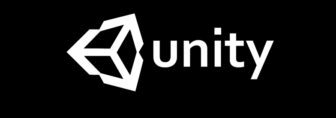3 Financial Trading Strategies To Try Out In 2023

When it comes to trading, there are various trading styles. Choosing the correct one is a challenge. To select the trading strategy you should first know your personality, what is your risk appetite, and whether you are risk averse. Or do you like the thrill of making many trades in the shortest amount of time? Let’s describe three trading strategies that could improve your trading.
Three Main Trading Strategies Every Trader Should Know
1. Scalping
Scalping is a trading approach where a trader opens many trades during the day for many small profits, the opposite of other conservative traders who prefer to hold positions for more than a day.
We will not provide scalping strategies in this article. For that, check out this one-minute scalping strategy to know more about scalping strategies. Scalpers need tight spreads, a fixed zero spread would be ideal.
Because of many trades with little profits, spreads can eat up most of the profits, making even profitable trading strategies lose money in the long term. Because of this aspect, it is crucial to have a zero-spread account.
Some brokers offer fixed zero spread account types, but it is outside this article to talk about brokers. So, what are the pros and cons of scalping trading strategies?
Pros Of Scalping
- Reduces the time the trader is exposed to the market. Since trades are open often for a few minutes, the chances of the market moving suddenly and catching a trader off guard are less than with day traders who have trades run for days.
- Ability to quickly evaluate the profitability of the strategy – since there are many trades daily, collecting enough trades to analyze profitability and other important data like profit factor, drawdown, etc. is much faster than with other slow strategies.
Cons Of Scalping
- spreads and commissions can eat up most of the profits, rendering even profitable strategies useless in certain conditions.
- Missing big movements, when closing a successful trade early, it is possible to miss a much larger move due to market trends.
- High trading volume – you will need to trade with high lot sizes to make good profits. This will require a deposit with a high balance, maybe above $10 000.
- Robots can make it hard to find trading setups. There are many advanced robots that monitor and catch short-term opportunities, making it harder for scalpers to find and react in time.
Read Also: Best Forex Trading Platform For Beginners
2. High-Frequency Trading
HFT or High-Frequency Trading is very popular lately because of advancements in computer technology, it is possible to make many trades in a fraction of a second with trading algorithms.
These trading activities are even faster than scalping, and therefore it is impossible for humans to open manually and requires sophisticated algorithms and fast computers.
The faster the execution speed of orders, the more profitable the algorithm. This requires that the trader who employs the HFT algorithm has a powerful computer with a very fast internet connection.
The closer the computer is to exchange servers, the lesser the delay is between the server and trader algorithm, enabling it to trade many times per second. Because of this, HFT is employed mainly by companies. HFT adds liquidity to the markets, but it disappears so quickly that human traders can not use it to their advantage. Let’s discuss the pros and cons of the HFT
Pros Of HFT
- Adds liquidity to the market.
- Fully automates the trading process
- Can make profits faster than other methods
Cons Of HFT
- Can cause large movements momentarily without a reason
- Requires expensive hardware
- Traders with better execution speeds are more profitable
- Requires sophisticated software and algorithms to make money
Read Also: Potential Benefits Of Short Selling
3. Swing Trading
Unlike previous trading methods, swing trading focuses on longer-term trades, where trades are usually open for more than a day but less than a week. Swing traders will try to catch a big part of the movement. This is definitely a trading style better suited for human-level speed of execution.
As with the above methods, swing trading is relying on technical analysis but sometimes can incorporate fundamentals as well. It is actually a good idea to combine fundamentals with technical analysis for better results.
It is also important to have a positive risk-to-reward ratio (R:R) of at least 1:1.5. With stock trading, swing traders prefer 1:3 R: R anything above 1:2 is good to consider. R:R 1:3 means the trader risks $1 to make $3.
Swing trading is popular and makes use of trend lines and other core technical trend analysis techniques.
Pros Of Swing Trading
- Can combine technical and fundamental analysis for greater success
- Less impact by trading robots that are trading with HFT strategies
Cons Of Swing Trading
- Traders are exposed to violent and sudden movements for longer times
- Gaps because of weekends and overnight commissions could potentially reduce profitability
- Can miss longer-term market trends because of focusing more on a short-term period of a few days
Additionals:





























